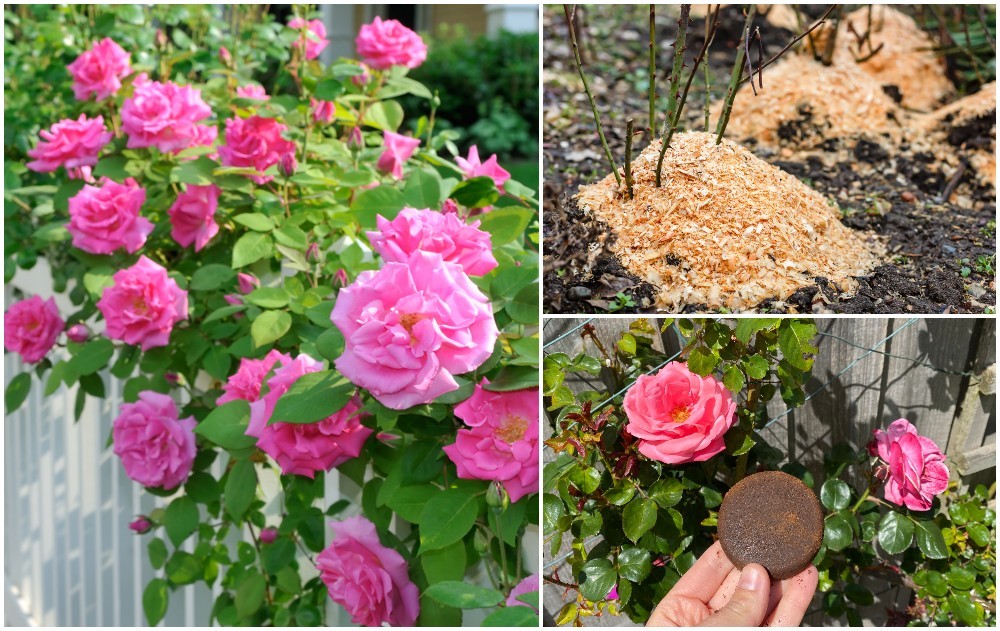
If you’re an organic gardener then you’ll know that trying to grow healthy roses can be a tricky affair! Roses, although beautiful, are a notoriously sensitive flower which can succumb to all manner of pests and diseases.
It can be done though – after all, the Chinese have been growing roses organically for 5,000 years!
The secret to organic gardening is understanding how nature works – and working with nature to produce beautiful shrubs and flowers.
Here are 11 tips to help you grow the most beautiful roses without the use of chemicals.
1. Choose a Position
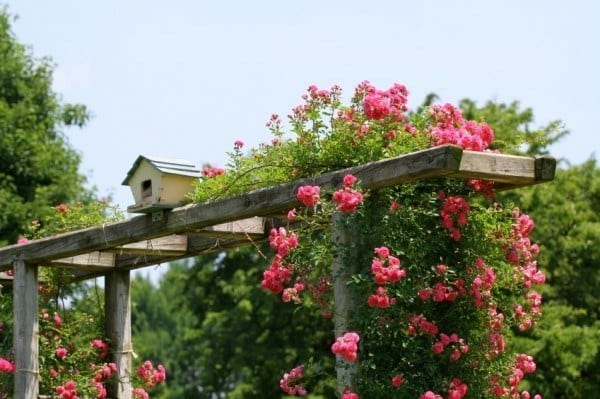
The first step to successful rose growing begins with choosing an area in the garden where they are sure to thrive.
You may want them to climb a wall or a trellis, or fit into a nice rose bed. Keep these points in mind when making your selection.
Firstly, sunlight is very important for roses – select a spot that gets six to eight hours of sun a day and has good drainage.
Secondly, adequate space is imperative. Roses need excellent air circulation to prevent disease and to ensure you have enough room to tend to them. Each rose bush should have a 3-foot diameter space to flourish.
2. Prepare Your Soil
Soil quality can make or break your rose garden. If your soil contains a lot of clay or sand, invest in topsoil and be generous with your homemade compost.
The pH of your soil plays an important role in the quality of the roses you will grow with the optimum pH falling in and around 6.5. Once you test your soil to determine the pH, there are a number of things your can do to either raise or lower the pH if necessary.
If you’re looking for a quick solution, you can buy a special product to alter the pH…although a natural approach is always better, even if it takes a little more time!
To acidify the soil, try adding an organic mulch – which is also quite beneficial for microbial life and improving the general quality of the soil. Use one made with pine bark, pine needles or sawdust. You can recycle kitchen waste here too such as citrus peels, vegetable peels or coffee grounds which all work wonders at lowering the pH.
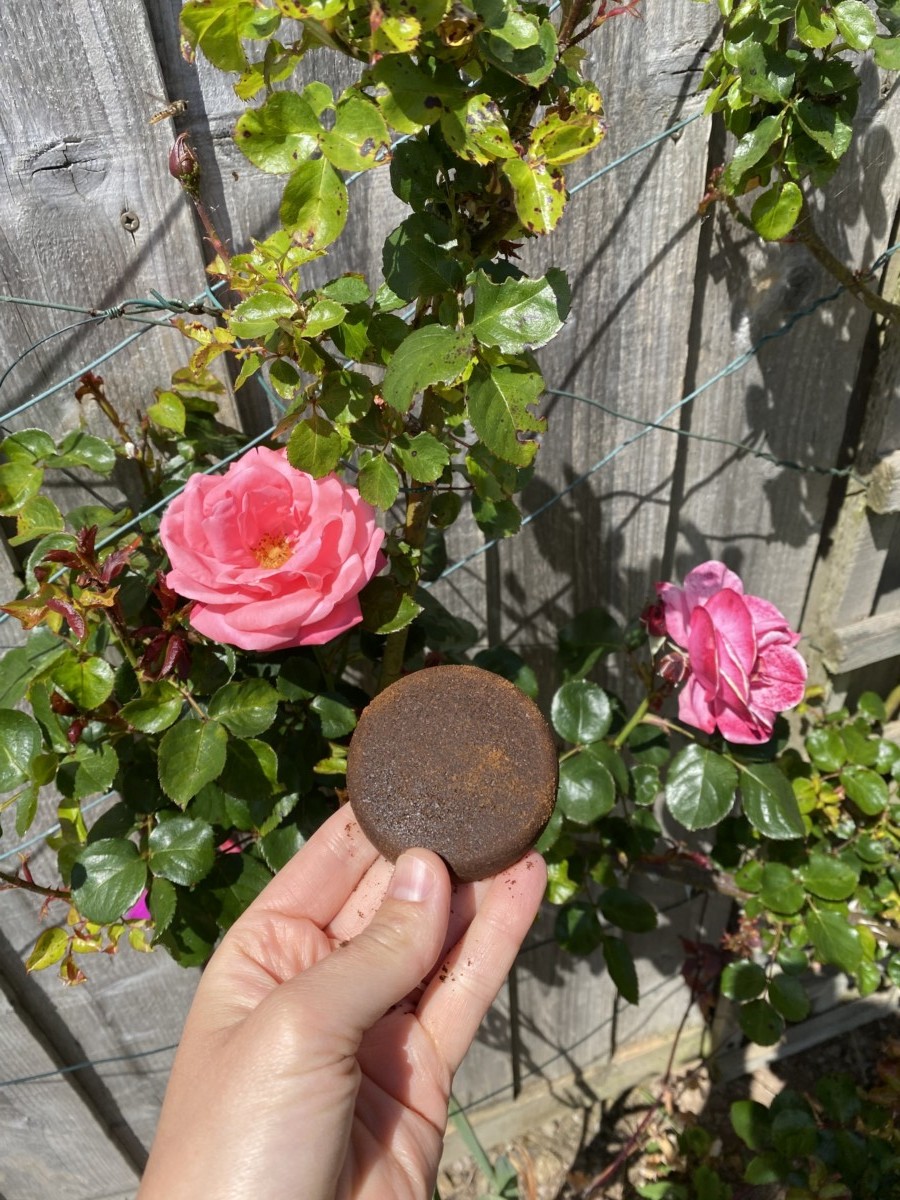
To raise the pH, making the soil more alkaline, it’s often recommended to use lime to slowly raise levels over a few months. However, natural options like ground crab or oyster shells, crushed eggshells or hardwood ashes are also very effective.
Work these natural products into the soil quite regularly and make sure to monitor the pH over time to see if it is going in the right direction. Don’t forget to test the pH of your water too, which could be enough to throw off this delicate balance!
3. Picking a Variety of Rose
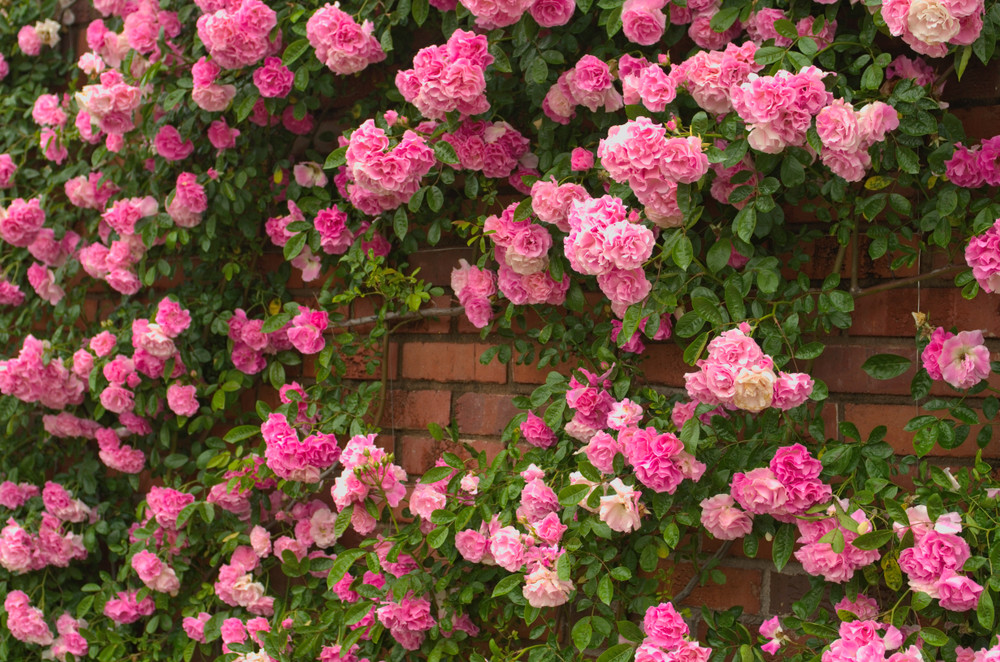
Make sure to choose a hardy variety of rose that’s right for your garden.
As rose bushes can vary greatly in size, you’ll need to consider the space available to you in your garden. If you want to grow your roses on a trellis, choose a variety from the climbers, ramblers and old garden rose categories.
Consider if you want repeat-flowering roses, which bloom from April to June, October to December and intermittently throughout the summer; or once-blooming roses which appear in April for three months or so and then produce few or no flowers afterward.
Roses are notoriously prone to disease, so picking a disease-resistant variety is imperative for an organic rose garden.
The top 10 resistant varieties are:
- Silver Ghost – repeat-flowering shrub rose with single white flowers.
- Temptress – repeat-flowering dark red climbing rose.
- Golden Gate – repeat-flowering, mid-yellow climber.
- Cinderella – repeat-flowering, very fragrant light pink climber.
- Lancashire – repeat-flowering, low-growing ground cover rose with unscented red flowers.
- Buxom Beauty – very fragrant, mauve pink rose with large flower heads.
- Champagne Moments – pale apricot flowers which fade to cream.
- Red Finesse – mid-size shrub with dark red flowers.
- Summer Beauty – full apricot flowers.
- Caribbean Dawn – pink flowers shaded in yellow and orange.
4. Hydration
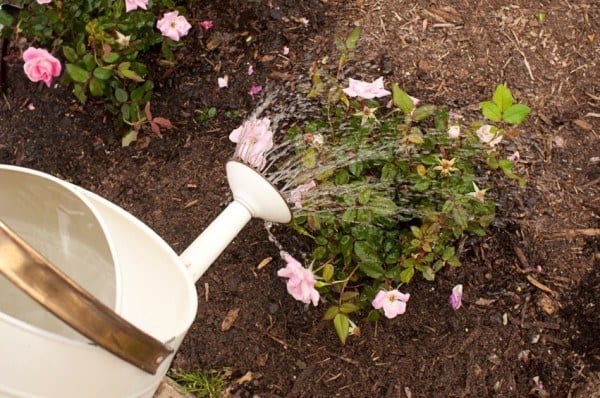
Once you have planted your roses, make sure to water them frequently, especially in the first few weeks.
Depending on the weather, you may need to water them every day. These picky plants need a lot of water – and sometimes even steady rainfall isn’t enough to quench their thirst during the summer months. Soil type will dictate water volume also – roses growing in sandy soil need more water than those in clay.
When you water be generous – wet the entire root zone. If the top two inches of soil are dry, give them extra water. Only wet the soil, not the leaves as this can lead to disease.
If you think the blooms could do with a pick-me-up, make sure to wet them infrequently and always in the morning so they can dry out before night falls.
5. Organic Rose Food
Roses don’t just need water, they need to be fed regularly too. They are best fed in the spring, after pruning; while they are in bud; and in mid-summer – at least 6 weeks before the first expected frost.
While you can buy a commercially prepared organic fertilizer, it’s much healthier and more rewarding to feed your roses with your own homemade organic recipe.
These homemade fertilizer recipes will see you grow big and beautiful roses on an all-natural diet!
6. Pruning Tips
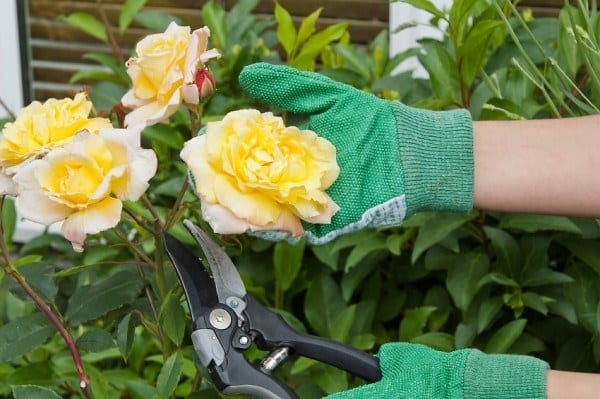
Roses are best pruned when out of bloom, which naturally improves plant health and keeps them nice and tidy looking.
Remove any leaves that remain on the plant and cut off dead or diseased branches. A good way to tell if a branch is dead (aside from it being brown or black) is that the inside of the stem will be brown instead of green.
Once you have done this, you can shape the plant as you would like. Make sure to rake up any leaves and stems from under the plant to cut down on disease and pests.
7. Mulching
This is one of the most important things you can do for the health of your roses, and is one of the simplest things too!
Mulching prevents moisture from escaping from the ground and keeps the roses hydrated. It also keeps the shrubs’ feet cool during the summer, stops weeds from growing, improves soil fertility over time and gives the rose bed a manicured appearance.
Simply apply a nice organic mulch to the base of each shrub. It’s best applied after pruning (although it doesn’t have to be).
Organic mulches include grass cuttings, pine needles, wood chips, shredded leaves, peanut hulls, or cocoa bean hulls. When choosing your mulch, remember to keep in mind your soil’s pH needs, as discussed above.
8. Protect Roses From the Elements
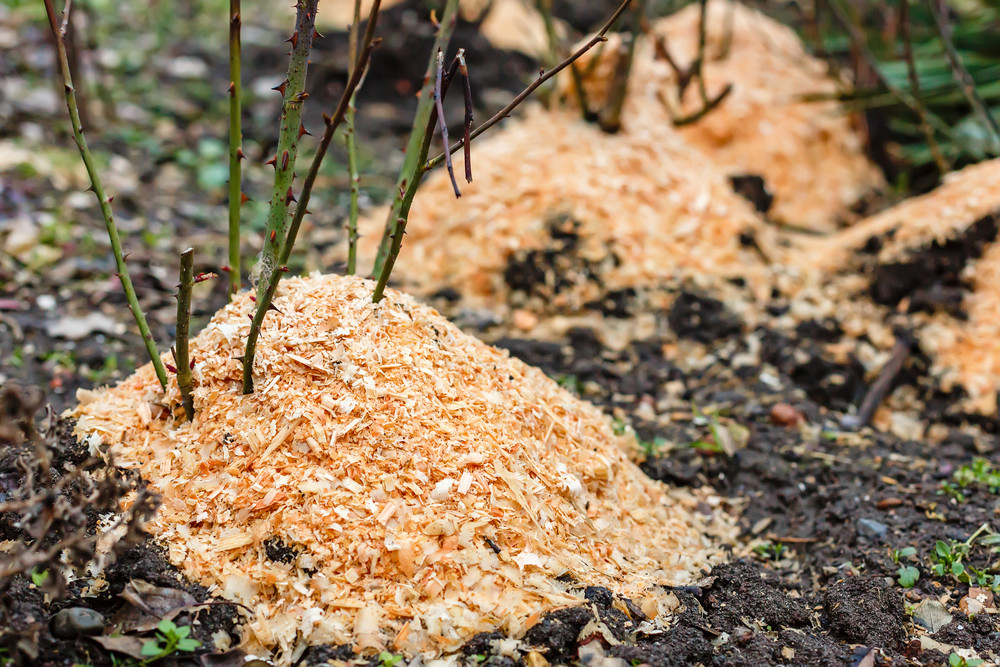
It’s not just us that needs to wrap up warm and stay sheltered from frost, snow, wind and rain – your precious and oh-so-sensitive roses do too!
For those of you lucky enough to live in an area where temperatures stay above 20°F, you don’t need to do anything. Those who suffer a harsher winter should keep reading.
The last application of fertilizer needs to be carefully timed so that the plants will stop producing flowers by the first projected frost date. However, you should keep watering your roses until the soil freezes.
Once frost arrives, you need to add a layer of insulation around the roots. Mound soil 8 inches high over the plant base and water well. Cut back long canes to 2-4 feet high and tie them together with twine to prevent winter damage. Cover the canes with an insulating fabric, which you can remove in early spring once the frost has passed.
Make sure you read up on these 9 things you should be doing in your Fall and Winter garden too!
9. Keep Pests at Bay Naturally
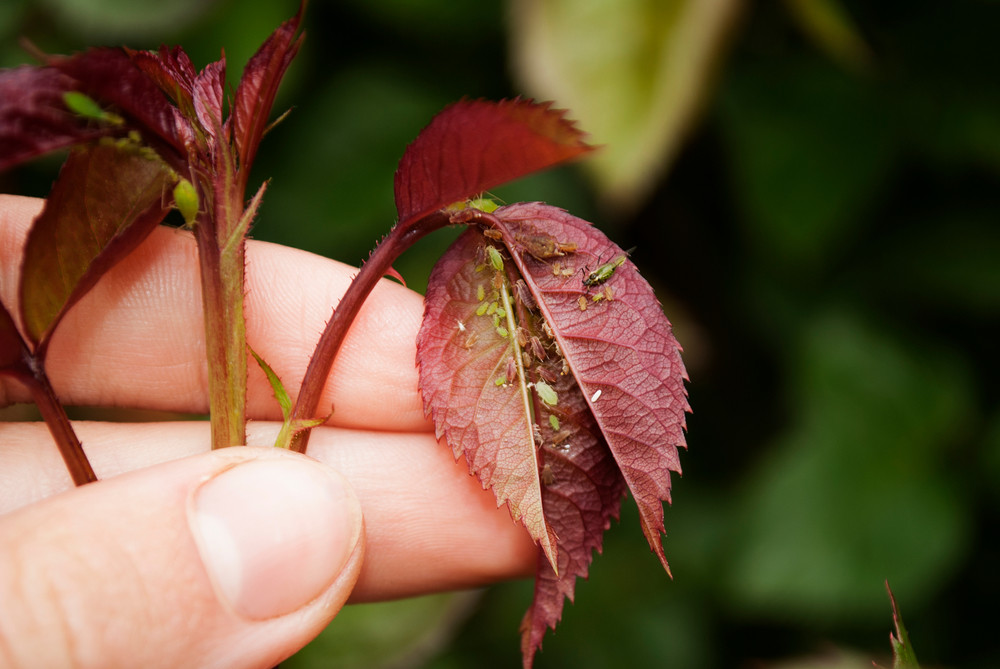
Rose plants can be harmed by a variety of pests including aphids, mites, caterpillars and more. If you take good care of your roses with the other tips here, these pests should be kept to a minimum.
However, having a good homemade pesticide on hand means you can take swift action should you need to!
A simple soap-oil spray can be whipped up by mixing one teaspoon of vegetable oil, one teaspoon of liquid soap and a cup of water. Spray on leaf surfaces and stems and wash off after a few hours to avoid damage to the plant. Re-apply every five to seven days.
If aphids in particular are your problem, try one of these 12 organic ways to get rid of the little pests.
10. Tackle Diseases Quickly
The key to organic gardening is to prevent, rather than cure, diseases which may affect your plants.
Roses are susceptible to a number of diseases (too many to list here!) but two common ones are blackspot and powdery mildew. If your roses are bothered by either of these, act quickly before they have a chance to spread.
One natural solution is to add two tablespoons of baking soda into each gallon of soap-oil pest spray and apply in the manner outlined above.
Using roses in mixed planting rather than in dedicated rose borders will also lessen the chance of disease.
11. Keep a Colorful & Diverse Garden
By growing a variety of plants in your garden, you’ll not only enjoy disease-free roses and a beautiful and colorful outdoor space but you’ll attract an assortment of animal and insect life.
These birds, ladybugs and other predatory insects will serve to reduce the populations of aphids and other pests which can damage your roses.
These 20 beautiful flowers will help to attract bees to your garden (and here’s why we should all be trying to save the bees); butterflies just love these 30 different types of plants; while these 10 tips can help to attract more beneficial insects.
Bonus Tips
Grow more roses by learning how to propagate rose cuttings. Here’s our tutorial for doing that.
And while your rose blooms are beautiful to look at, did you know there are also so many ways to use the rose petals? Take a look at eleven ideas here.
